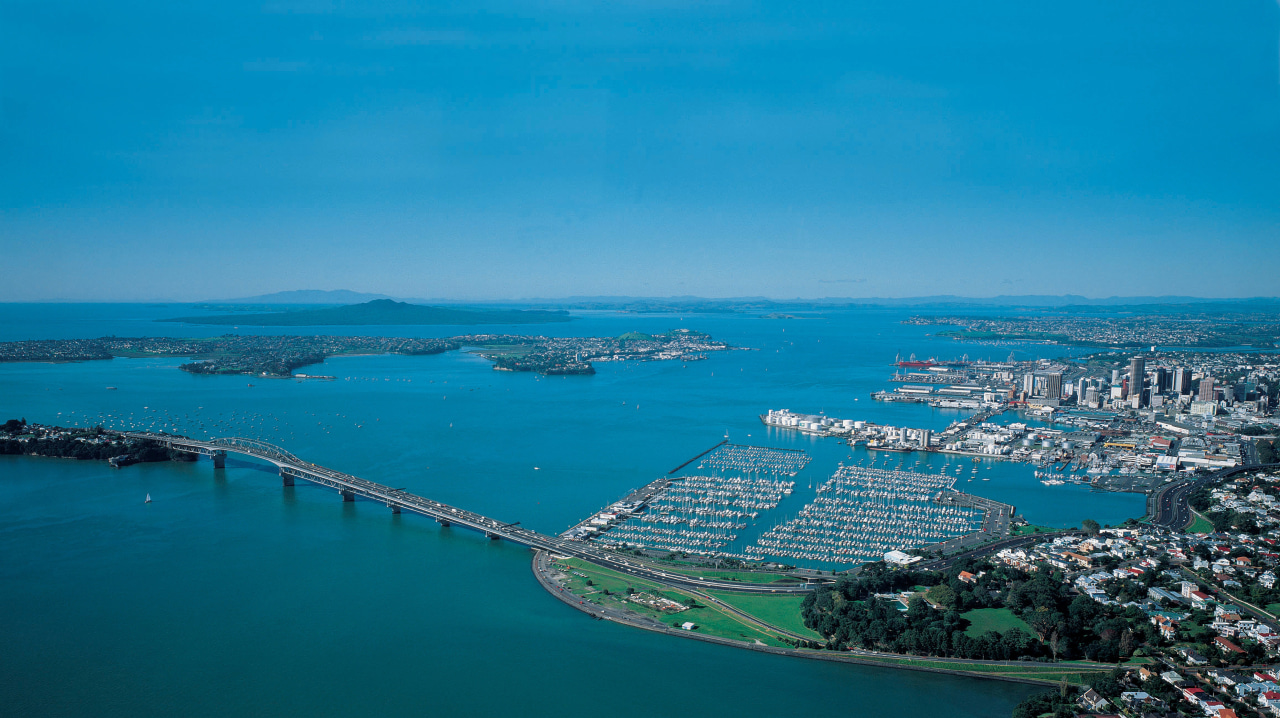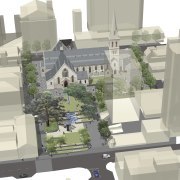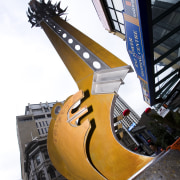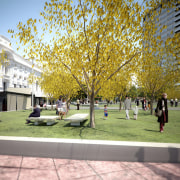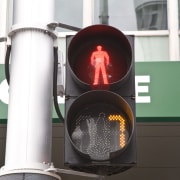A city to behold
Blessed with temperate weather, a spectacular location and a wealth of resources, Auckland city is set to shine with the Auckland City Council's visionary urban designs
Shaping the destiny of a world-class city requires a strong, cohesive vision. Stunning natural attributes are a head start, but only part of the story in a bustling city environment with competing priorities, funding constraints, short political cycles, regulatory hurdles and a fluctuating economy. Taking giant strides forward in a city's progress requires teamwork, determination and informed decision making in other words, visionary urban design.
The Auckland City Council sees tight, inspired urban design as the way forward for New Zealand's largest city. The council is poised to make Auckland city a familiar name around the globe and a source of pride for the 1.5 million citizens of all creeds, ages, and cultures that reside here, says urban design manager Ludo CampbellReid.
"This close urban design process is championed from the top but, in fact, is being delivered jointly by key groups across the council and by each of the operational areas," says Campbell-Reid. "Our aim is to see urban design thinking as an everyday component of building a great city rather than something which is extraordinary and that you add on at the end.
"In order to be successful we need to create a shared vision and a one-organisation, multidisciplinary approach whereby the council, business and the public all work together. This has never been more important than in the current economic climate. Our challenge is how to create a beautiful, distinctive city that doesn't cost the earth. It requires innovation and creativity, economies of scale and value for money."
Auckland City Council's general manager city development, John Duthie, says urban design is a fundamental driver for the council in terms of its own developments as well as those of the private sector.
Bearing all this in mind, the Auckland City Council has a rich, diverse focus for the years to come. Hosting the most anticipated, widely televised global sporting event of our time the Rugby World Cup is one standout marketing and tourist opportunity. Other driving imperatives include the ongoing revitalisation of Auckland's sparkling waterfront and the rejuvenation and reinvention of the CBD. There are also strategic plans for the greater city and its future development all part of the council's drive to make Auckland city as good as it can be.
"Council places urban design thinking at the epicentre of what we are trying to do," says CampbellReid. "As with the achievement of a stable economy, maximisation of employment and sustainable design practices, it underpins everything that we are doing."
It would be hard to imagine a sporting event more advantageous to Auckland city than the hosting of the Rugby World Cup in 2011. Over 60,000 fans will descend on Auckland from the corners of the globe to watch the closing stages of what is the third largest sporting contest on the planet. About two thousand journalists will arrive to record the event, which will grace television sets viewed by four billion eyes around the globe. The Auckland regional economy will benefit to the tune of up to $315 million.
Twenty countries will participate in the Rugby World Cup and the 48-game tournament will be held over a six-week period in September and October 2011 at venues across New Zealand.
However, Auckland City Council's events group manager Rachael Dacy says the eyes of the world will be on Auckland for the business end of the tournament when Eden Park plays host to the final over Labour Weekend, as well as both semi-finals the weekend before.
"The World Cup is a fantastic opportunity for our city a major global event such as this brings a giant morale boost for the city, creates a shining light for the future, and provides revenue streams for the hundreds of hotels, restaurants, bars, tourist attractions, retailers and other businesses that will gear up for the influx of visitors," she says. "The fixed deadline is a bonus for us, enabling the council to fast-track changes that will have benefits for Aucklanders long after the Rugby World Cup has finished. The Auckland region is looking to maximise this opportunity, with its potentially spectacular benefit to the local economy."
Dacy does not speak lightly over $22 million has been allocated for substantially upgrading the greater Eden Park precinct. But the rewards to the tune of over $300 million will be far greater.
Elements being addressed include a raft of transport projects, such as a substantial upgrading of Sandringham Road, and improved pedestrian access between Sandringham Road and Eden Park. Overall, the aim is to create an easy pedestrian flow from the park right down to the city's shoreline and neighbouring town centres, such as Kingsland and Ponsonby.
In addition to improving walking routes there are also plans to improve street lighting and signage. New street furniture will further enliven the area and provide a welcome addition for visitors exploring the city on foot.
"Making the place spectacular for visitors and Aucklanders is one thing, but we are also taking care that from a global perspective our city isn't lost in the scrum," says Dacy. "Once you're inside Eden Park grounds you could be anywhere, from a camera lens point of view."
To avoid this, the council proposes to have elements of the World Cup opening ceremony on the waterfront, with several other events scheduled in the CBD all with cameras rolling to pick up the action and the real star of the planet-wide broadcasts our vibrant city.
Live sites are another dressed-up element outside the venue, giving punters ringside seats for the action, rain or shine, at a giant-screen venue in the central city and smaller live sites across the region.
"The World Cup has a broad benefit," says Dacy. "Local councils will be getting behind these events and, again, international camera crews will be taking in the action."
Dacy says Aucklanders themselves are encouraged to collaborate with the council on this vibrant project.
"To make the most of this event, everyone from homeowners to business owners in areas touched by this sporting event needs to ensure their premises and frontages help make Auckland city, our city, shine."
Few places have a glittering interaction between land and water to rival Auckland city, a world-class destination famous for its maritime history.
Several projects encompass plans to redevelop and revitalise Auckland's CBD waterfront, extending from Westhaven and Harbour Park in the west, to Wynyard Quarter, the wharves and eastwards to Teal Park.
The theme of connecting people, city and sea means seeing the revitalisation as part of a big picture strongly interrelated with other developments such as the Britomart precinct, Vector Arena and the Viaduct Harbour. Synergy is a key word in this broader context one development helping catalyse and connect to the next in these key areas of the city.
The new Marine Events Centre, already through concept and preliminary design stages, will provide a central facility for the Viaduct. This is intended to consolidate existing events facilities and capacity in the area. The centre is viewed as critical to Auckland's ability to retain and attract international events and is to be open before RWC 2011. The Marine Events Centre will sit between the planned bridge connection across Te Wero Island to Halsey and Jellicoe Streets. This bridge, with final form and function still under consideration, will carry people along the shortest route between the CBD-Viaduct area and Wynyard Quarter and Westhaven.
Balancing competing needs is also an inherent part of the council's plans for example, the Te Wero bridge connection, while serving to link the CBD, Wynyard Quarter and the Marine Events Centre, will also facilitate the passage of boats in and out of the Viaduct.
Wynyard Quarter, historically an important focus for the port-related and marine industries, is a large part of Auckland City Council's and Auckland Regional Council's joint vision for the waterfront. The aim is to create a range of public open spaces and a variety of pedestrian experiences over the area. Redefining of the land-use parameters for Wynyard Quarter is presently under way to facilitate this.
Improvements will aim to balance the amount, location and types of public open space, backed with efficient transport and infrastructure networks. The process is working to manage the relationship between public and private developments to ensure the right outcome with regard to building height and form. Parks and plazas in Wynyard Quarter will make the most of access to the water's edge. Development on Wynyard Quarter will also follow environmentally sustainable design principles across water use, stormwater management, soil remediation and building design.
Westhaven Marina is to be redeveloped to improve public access and amenities, making it more appealing as a visitor destination. This area will be transformed into a mix of retail, public promenades and marine industry activity. The balance sought here will be to ensure that recreational boating, charter services, boat clubs and coastal services remain the focal point, while allowing people to access and connect to the water's edge.
Auckland's CBD is a vital part of our city's lifeblood in terms of tourism, business and city pride. In recognition of this, the Auckland City Council's Into the Future strategy was launched in 2004 a 10-year plan to radically transform the CBD. Over a decade, the area will consolidate and build on reputation and become one of Australasia's most vibrant business and cultural centres.
A significant strand of realising the CBD vision is to ensure that key inner-city streets and open spaces are upgraded and transformed into those of a world-class city. To this end, in 2004, a 12-year CBD open space and streetscape upgrade programme was established, which focuses on paving, lighting, street furniture, street trees and vegetation. The programme, funded by the CBD targeted rate, generates some $175.5 million in funding. It has already seen the successful upgrade of seven CBD streets and open spaces, including Queen Street, Lorne Street, Vulcan Lane, Swanson Street, Quay Street, lower Khartoum Place, and Karangahape Road.
David Jones, CBD projects group manager, says the council sees the revitalisation of the CBD streetscapes and open spaces as an essential element in the city's future success and a critical stimulus given the current economic climate.
"They are the canvas on which future development will sit," says Jones. "The success of Queen Street's upgrade is evidence of this, as we have seen new high-end retail attracted and pedestrian numbers jump 30%."
Currently under way are upgrades in two of the CBD's most important open spaces St Patrick's Square and Aotea Square. The upgrade of St Patrick's Square, once completed in November 2009, will transform this space into a central urban oasis. The design complements the recently restored cathedral and responds to how workers, residents and visitors will use the space. Upgrades include water features, attractive lighting, plantings and seating areas. Feature paving will contribute to the square's transformation, as will artworks from leading Auckland artists.
"St Patrick's Square will become a high-quality urban open space where people can come and relax during the day and enjoy the environment," says Jones.
Work to upgrade Aotea Square began in 2008 and is scheduled to be completed by October 2010. This $80 million project is integral to Auckland's CBD Into the Future strategy and will contribute to the council's aim to enhance the Aotea Quarter as the city's cultural heart, civic core and arts and entertainment centre. Benefits will include more staging options for outdoor events, improved accessibility, new design elements reflecting Aotea Square's character, and a contemporary look. There will be ample green space for relaxation and a flexible paved space with viewing areas.
"Aotea Square will be a key event space of the future and sits within the Aotea Quarter, an area we see leveraging off the natural creative hub of the city to engender greater buzz and activity," says Jones.
Another major cultural emphasis within the Aotea Quarter is the development of Auckland Art Gallery, ensuring this iconic landmark building is protected for future generations, while meeting all international operational requirements. The development aims to enhance the gallery as a major contributor to tourism and economic growth, while offering a place of recreation and leisure. The upgrade will dramatically enhance the gallery's functionality, capacity and operation through 50% more exhibition space, a larger cafe, auditorium and gallery shop. It will also offer improved function and event facilities and more interactive spaces for children and families.
Concept design work is currently in progress for the next raft of CBD streetscape upgrades, including Elliott and Darby Streets, Lorne and Rutland Streets and Fort Street environs in the Queen Street valley. These upgrades are set for completion prior to the Rugby World Cup.
"We want to transform these areas into places which have a sense of destination and where people linger longer. Improving pedestrian priority and amenity is central to our future streetscape upgrades," says Jones.
One of the world's most vibrant, dynamic business and cultural centres this is the vision of the council for Auckland city. This requires planning not just in the years to come, but looking ahead to the distant future.
In 2006 the council set up a Property Enterprise Board to implement a more hands-on role in shaping the city's future. The board identifies opportunities for the council to acquire property or utilise existing council property in strategically important areas of the city to further the council's long-term urban design vision.
In addition, the benefits for the community from the council's Development with Vision strategy, formed in 2004, include high-quality, sustainable developments throughout Auckland city. These support future urban growth, demonstrate best practice in urban design and take into account the city's social, environmental, economic and cultural well-being.
Some initiatives are already being delivered through the Britomart Transport Centre, land acquisition and development planning in town centres and within the CBD and the waterfront. Longer term, the Auckland City Council looks to lead high-quality sustainable residential and mixed-use developments in strategic areas of the city, especially where these developments will significantly enhance the local urban environment.
Land purchase and development will grow and revitalise Avondale, Panmure and Otahuhu attracting people and investment to these key areas. The council also influences private developers to ensure a consistent standard of urban design and sustainability.
Whether it is a new state-of-the art Marine Events Centre or the placement of chic outdoor furniture in Auckland's leafy CBD enclaves, every aspect of the city's evolution is closely considered by the council. Planning a city's future, with so many political and business variables at play, requires a strong visionary heart and an even stronger head for business.
Ludo Campbell-Reid says that while the nature of forward planning is always aspirational, it can also be quantified in terms of performance.
"There are several ways to measure our successes more pedestrians in city centres, increased numbers on public transport, more parks, open spaces, and more green space," he says. "Another positive outcome is seeing new businesses locating to Auckland from other parts of the country and from overseas."
There are other exciting projects set for Auckland's future, including a CBD loop, a CBD-to-airport rail line, opening up Queens Wharf to full public access, light rail or equivalent up Queen Street, and more.
"The World Cup alone will signpost other events of a similar stature for the city not only are facilities in place, but future event bids will be greatly strengthened by the council's rallying for 2011," he says. "As with any astute urban city plan, everything is considered in context of the wider effect. Cohesive big city changes only come about from far-sighted big city plans."
For details, contact the Auckland City Council, Civic Building, 1 Greys Avenue, Auckland 1010, phone (09) 379 2020. Web: www.aucklandcity.govt.nz.
Story by: Trendsideas
Home kitchen bathroom commercial design
9 tile shapes and finishes that think outside the square
Reflection and repose
Curves upon curves
